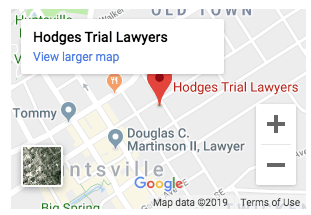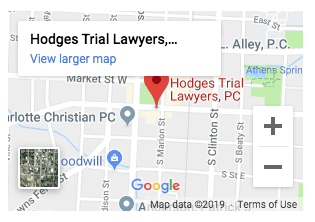Intersection accidents are alarmingly common and can have devastating consequences. The convergence of vehicles from multiple directions creates a high-risk environment where a single moment of inattention or a poor decision can lead to a serious collision. For those injured in such a crash in Alabama, the path to securing fair compensation is often complicated by the intricate process of determining fault, a process made even more challenging by our state’s strict liability laws.
The aftermath of a crash is a whirlwind of confusion, medical concerns, and financial pressures.
The High-Risk Nature of Alabama Intersections
Intersections are, by design, points of conflict in the flow of traffic. Whether it is a simple rural crossroads or a complex, multi-lane urban junction in Huntsville, the potential for error is always present. Drivers must process a large amount of information simultaneously: traffic signals, stop signs, the speed and direction of other vehicles, and the actions of pedestrians or cyclists. This complexity is why a significant percentage of all traffic accidents occur at intersections.
Different types of intersections present unique dangers:
- Signalized Intersections: While traffic lights are meant to control the flow of traffic, they are only effective when drivers obey them. Running a red light or attempting to speed through a yellow light can lead to severe T-bone accidents.
- Stop Sign-Controlled Intersections: At two-way and four-way stops, accidents often happen when a driver misjudges the speed of an oncoming vehicle, fails to see another car, or neglects to come to a complete stop.
- Uncontrolled Intersections: These intersections, common in rural areas or residential neighborhoods, lack any traffic signals or signs. Here, drivers must rely on established right-of-way rules, and confusion about who has the right to proceed is a frequent cause of collisions.
- Roundabouts: Though designed to improve traffic flow and reduce the severity of accidents, roundabouts can be confusing for unfamiliar drivers, leading to failure to yield and sideswipe incidents.
Common Causes of Intersection Collisions
While each accident has a unique set of circumstances, most intersection crashes can be traced back to some form of driver negligence. Identifying this negligence is the first step in building a successful personal injury claim.
Some of the most prevalent causes include:
- Disregarding Traffic Signals: A driver who runs a red light or a stop sign is acting with clear negligence and is almost always found to be at fault for a resulting crash.
- Failure to Yield the Right-of-Way: Many intersection accidents happen because a driver fails to yield to another vehicle that has the legal right to proceed first. This is especially common in left-turn scenarios.
- Illegal or Unsafe Left Turns: Turning left across oncoming traffic is one of the more dangerous maneuvers a driver can make. Drivers attempting a left turn must wait for a safe gap in traffic; turning in front of an oncoming car often results in a catastrophic broadside collision.
- Distracted Driving: A driver who is texting, talking on the phone, adjusting a GPS, or otherwise not paying full attention to the road is far more likely to miss a changing light or an approaching vehicle.
- Speeding: Exceeding the speed limit reduces a driver’s reaction time and increases the distance required to stop safely. A speeding driver may be unable to stop in time for a red light or may enter an intersection too quickly to avoid a hazard.
- Driving Under the Influence (DUI): Alcohol and drugs impair a driver’s judgment, coordination, and reaction time, making them a significant danger at intersections.
- Obstructed Views: Sometimes, overgrown vegetation, illegally parked vehicles, or buildings can block a driver’s view of an intersection, contributing to a collision. In these cases, liability may extend beyond the drivers involved.
Types of Accidents at Intersections
The way in which vehicles collide at an intersection can help investigators determine how the accident happened and who was at fault. The angle of impact and the location of the vehicle damage tell a story that can be vital to your case.
- T-Bone (Broadside) Collisions: This is the classic intersection accident, where the front of one vehicle strikes the side of another. These are frequently caused by a driver running a red light or stop sign and are particularly dangerous because the side of a vehicle offers minimal protection to its occupants.
- Head-On Collisions: While less common at intersections than T-bone crashes, head-on impacts can occur when a driver making a left turn misjudges the speed of an oncoming car and collides with it head-on.
- Rear-End Collisions: These are very common at intersections with traffic lights or stop signs. They often happen when a driver is following too closely or is distracted and fails to notice that the vehicle ahead has stopped.
- Sideswipe Accidents: In intersections with multiple lanes of traffic traveling in the same direction, unsafe lane changes can lead to one vehicle sideswiping another.
Immediate Steps to Take After an Intersection Crash
The actions you take in the minutes and hours following an intersection accident can have a significant impact on your health and your ability to pursue a legal claim.
- Prioritize Safety: If you are able, move your vehicle to a safe location off the roadway to prevent further accidents. Turn on your hazard lights.
- Check for Injuries and Call 911: Assess yourself and your passengers for injuries. Call 911 immediately to report the accident and request medical assistance if1 A police report is an essential piece of evidence.
- Document the Scene: Use your smartphone to take extensive photos and videos of the accident scene from multiple angles. Capture the damage to all vehicles involved, skid marks on the road, the final resting position of the cars, traffic signals, and any visible injuries.
- Exchange Information: Get the other driver’s name, contact information, driver’s license number, and insurance details. Do not engage in a discussion about who was at fault.
- Identify Witnesses: If anyone saw the accident, ask for their names and contact information. An independent witness statement can be invaluable.
- Seek Medical Attention: Even if you feel fine, it is important to be evaluated by a medical professional. Some serious injuries, like whiplash or internal bleeding, may not present symptoms immediately. Medical records create a direct link between the accident and your injuries.
- Refrain from Admitting Fault: Do not apologize or say anything that could be interpreted as an admission of fault to the other driver, witnesses, or police. Let the investigation determine liability.
Establishing Fault in an Alabama Intersection Accident
Alabama is an “at-fault” state, which means the person responsible for causing the accident is liable for the damages. To recover compensation, you must prove that the other driver was negligent and that their negligence directly caused your injuries.
Establishing fault involves a thorough investigation and the collection of strong evidence. Key components include:
- Alabama Traffic Laws: A driver who violates a traffic law, such as the law requiring a complete stop at a stop sign or yielding the right-of-way, is generally presumed to be negligent.
- Police Report: The responding officer will document their observations about the crash scene, interview drivers and witnesses, and may issue a citation or state their opinion on the cause of the accident. While not always admissible in court, the police report is a powerful tool during insurance negotiations.
- Evidence from the Scene: Photographs, witness statements, and footage from dashcams or nearby surveillance cameras can provide objective proof of what happened.
Types of Compensation Available in an Intersection Accident Claim
If you can successfully prove that another party was entirely at fault for your intersection accident, you may be entitled to recover compensation for your losses. These damages are typically categorized into two types:
Economic Damages: These are the tangible, verifiable financial losses you have incurred. They include:
- Past and future medical expenses (hospital stays, surgeries, medication, physical therapy)
- Lost wages and income from being unable to work
- Loss of future earning capacity if you are permanently disabled
- The cost to repair or replace your vehicle
- Other out-of-pocket expenses related to the accident
Non-Economic Damages: These damages are intended to compensate you for the intangible, personal losses that have no exact price tag. They include:
- Physical pain and suffering
- Emotional distress, anxiety, and mental anguish
- Loss of enjoyment of life
- Permanent scarring or disfigurement
How Evidence Helps Prove Your Case
Because of the contributory negligence rule, the strength of your claim rests on the quality and quantity of your evidence. A skilled personal injury attorney can help gather and preserve evidence that may include:
- The Official Police Report: This provides an initial framework for the investigation.
- Eyewitness Testimony: Independent witnesses who can confirm that the other driver ran a red light or failed to yield are incredibly persuasive.
- Video Footage: Many intersections have traffic cameras or are monitored by nearby businesses with security cameras. This footage can provide indisputable proof of how the accident occurred. Dashcam footage is also a powerful tool.
- Vehicle Damage Analysis: The location and severity of the damage to the vehicles can help accident reconstruction professionals determine factors like speed at impact and angle of collision, which can help establish fault.
- Cell Phone Records: If distracted driving is suspected, obtaining the other driver’s cell phone records can sometimes show if they were texting or talking on the phone at the moment of the crash.
Intersection Accident in Alabama? Get the Full Compensation You Deserve.
Determining fault in an Alabama intersection accident is rarely straightforward, especially when the other party’s insurance company is actively working to shift even a small amount of blame onto you to avoid paying the claim. Protecting your rights and pursuing the full compensation you deserve requires a detailed investigation, a strong command of the evidence, and a deep knowledge of Alabama’s contributory negligence law.
If you or a loved one has been injured in an intersection accident, you do not have to face the legal battle alone. The team at Hodges Trial Lawyers, P.C. is prepared to handle every aspect of your case, from gathering evidence and dealing with insurance adjusters to fighting for your rights in court if a fair settlement cannot be reached.
Contact us today to schedule a free, no-obligation consultation to discuss your case and learn how we can help.



